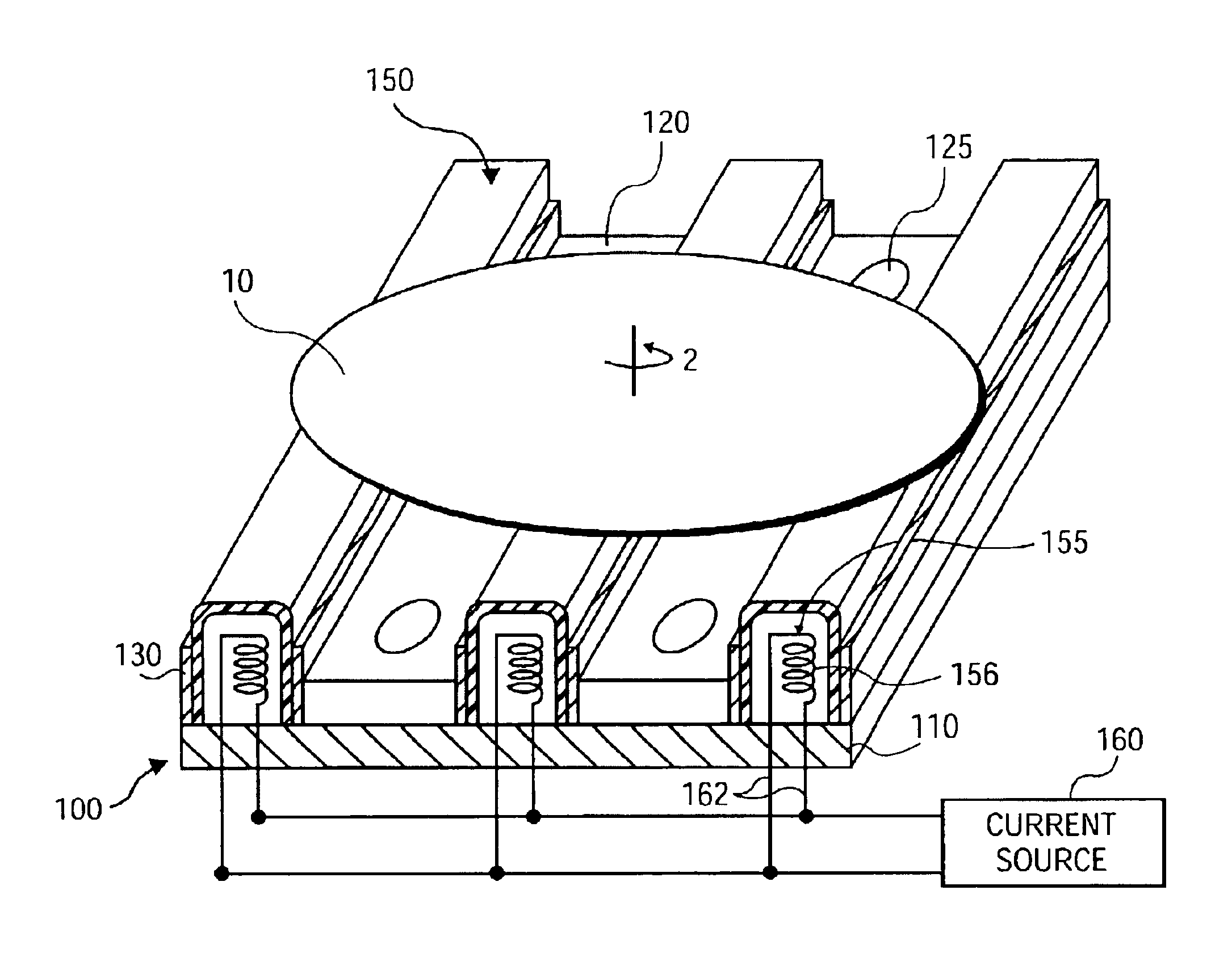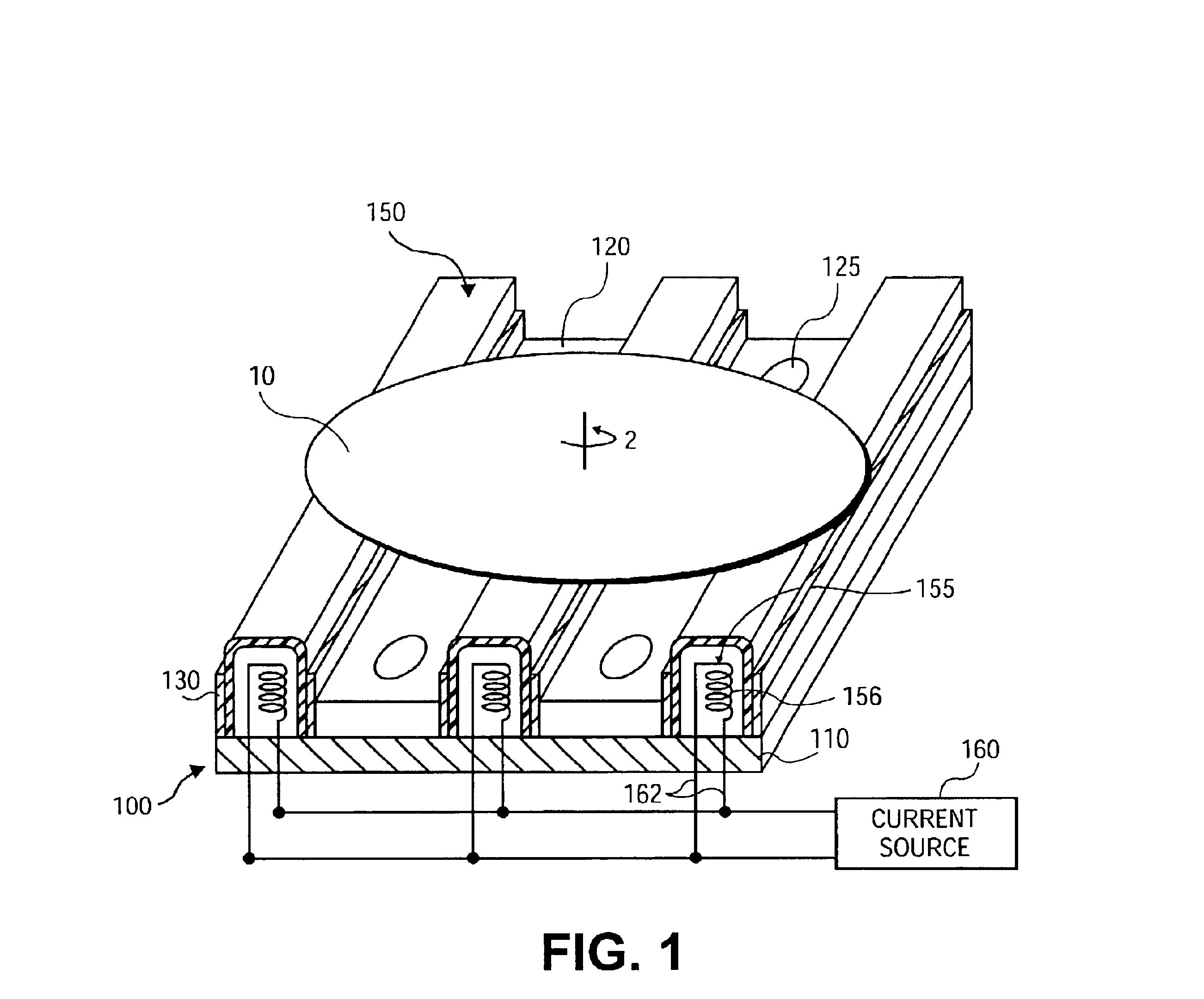Plating method and apparatus using contactless electrode
a contactless electrode and electrode technology, applied in the field of semiconductor processing, can solve the problems of deficiency in several ways of the electroplating process known in the art, variation in current density, potential drop between the wafer edge and the edge of the wafer edg
- Summary
- Abstract
- Description
- Claims
- Application Information
AI Technical Summary
Benefits of technology
Problems solved by technology
Method used
Image
Examples
Embodiment Construction
The described embodiments of the present invention address plating a metal (metal being defined herein to include not only the metal, but metal alloy and other compositions having metal that provide metal properties when deposited) layer on a wafer surface or a layer formed on a wafer, using a contactless electrode, having an inductive or capacitive element, to generate current and / or voltage on the wafer surface. Although a semiconductor wafer is used as an example to describe the embodiments herein, other substrates, including a flat panel or magnetic film head, may be used instead. Furthermore, while described embodiments refer to the plating of a metal, the described techniques may be employed to plate a metal, metal alloy, or other conductive materials or layers.
FIGS. 1 and 2 illustrate a perspective view and a cross-sectional detailed view, respectively, of one embodiment of the present invention. The embodiment is illustrated as assembly 100. A wafer carrier 20 supports a waf...
PUM
| Property | Measurement | Unit |
|---|---|---|
| Electric charge | aaaaa | aaaaa |
| Current | aaaaa | aaaaa |
| Electrical conductor | aaaaa | aaaaa |
Abstract
Description
Claims
Application Information
 Login to View More
Login to View More - Generate Ideas
- Intellectual Property
- Life Sciences
- Materials
- Tech Scout
- Unparalleled Data Quality
- Higher Quality Content
- 60% Fewer Hallucinations
Browse by: Latest US Patents, China's latest patents, Technical Efficacy Thesaurus, Application Domain, Technology Topic, Popular Technical Reports.
© 2025 PatSnap. All rights reserved.Legal|Privacy policy|Modern Slavery Act Transparency Statement|Sitemap|About US| Contact US: help@patsnap.com



